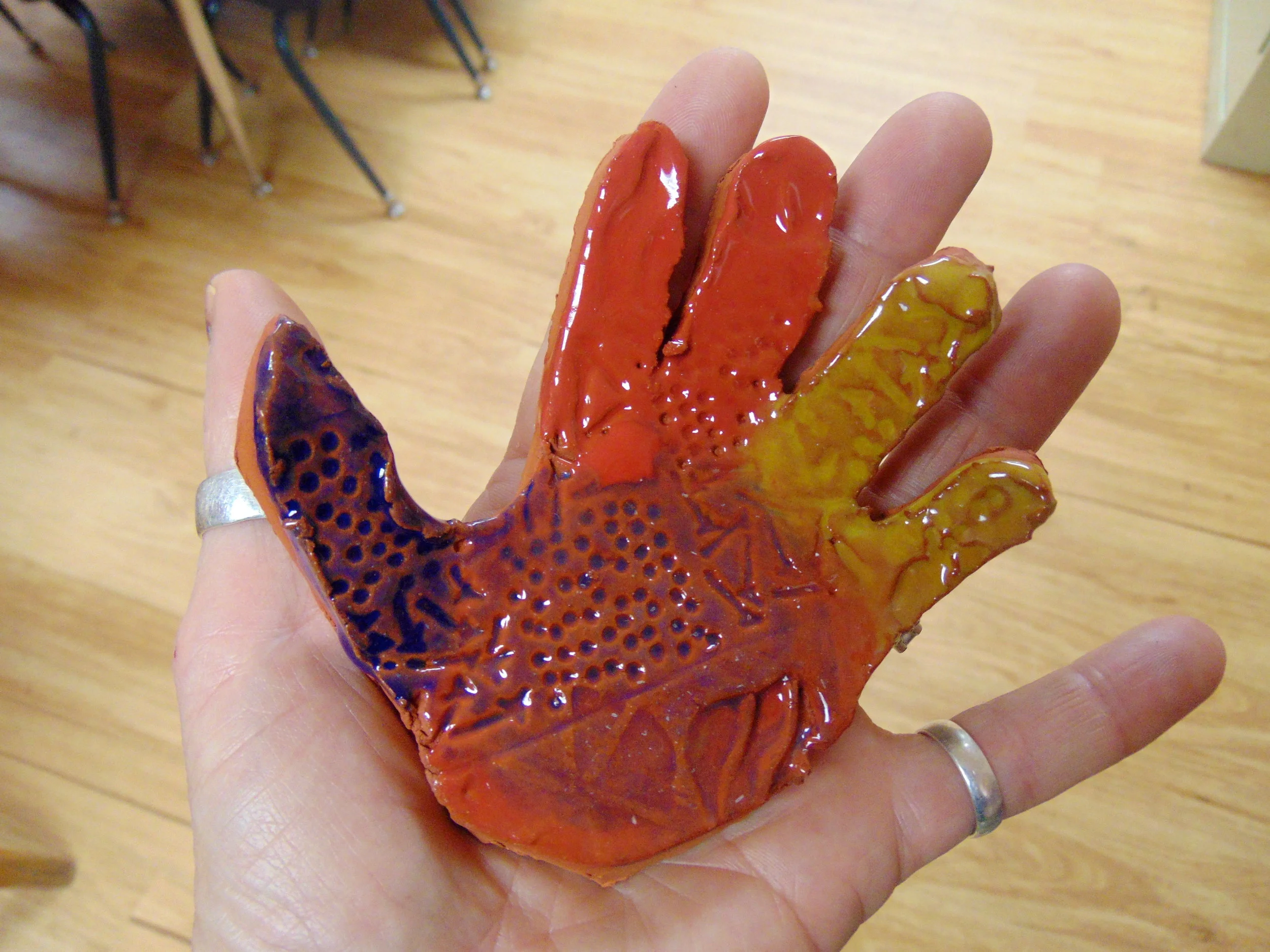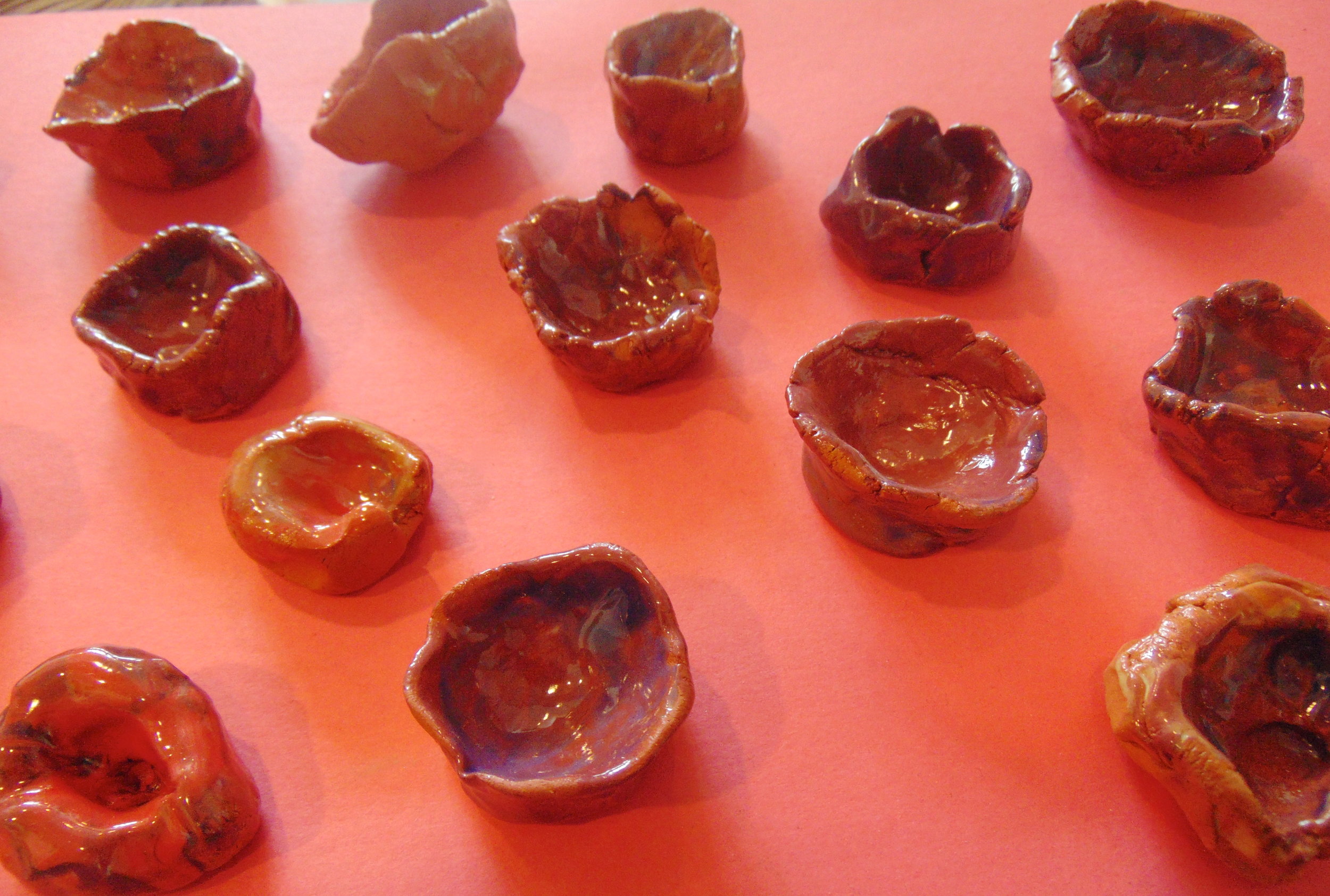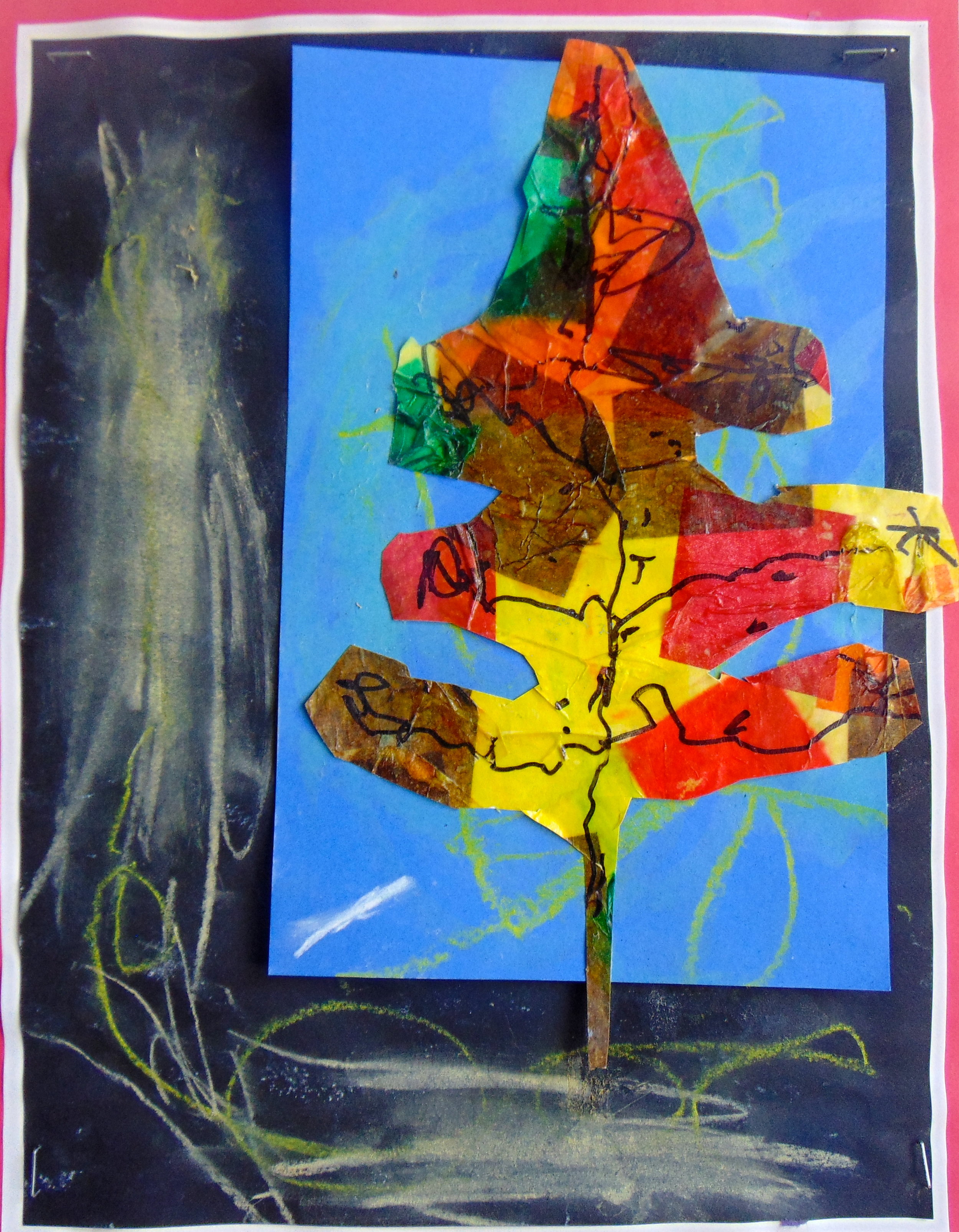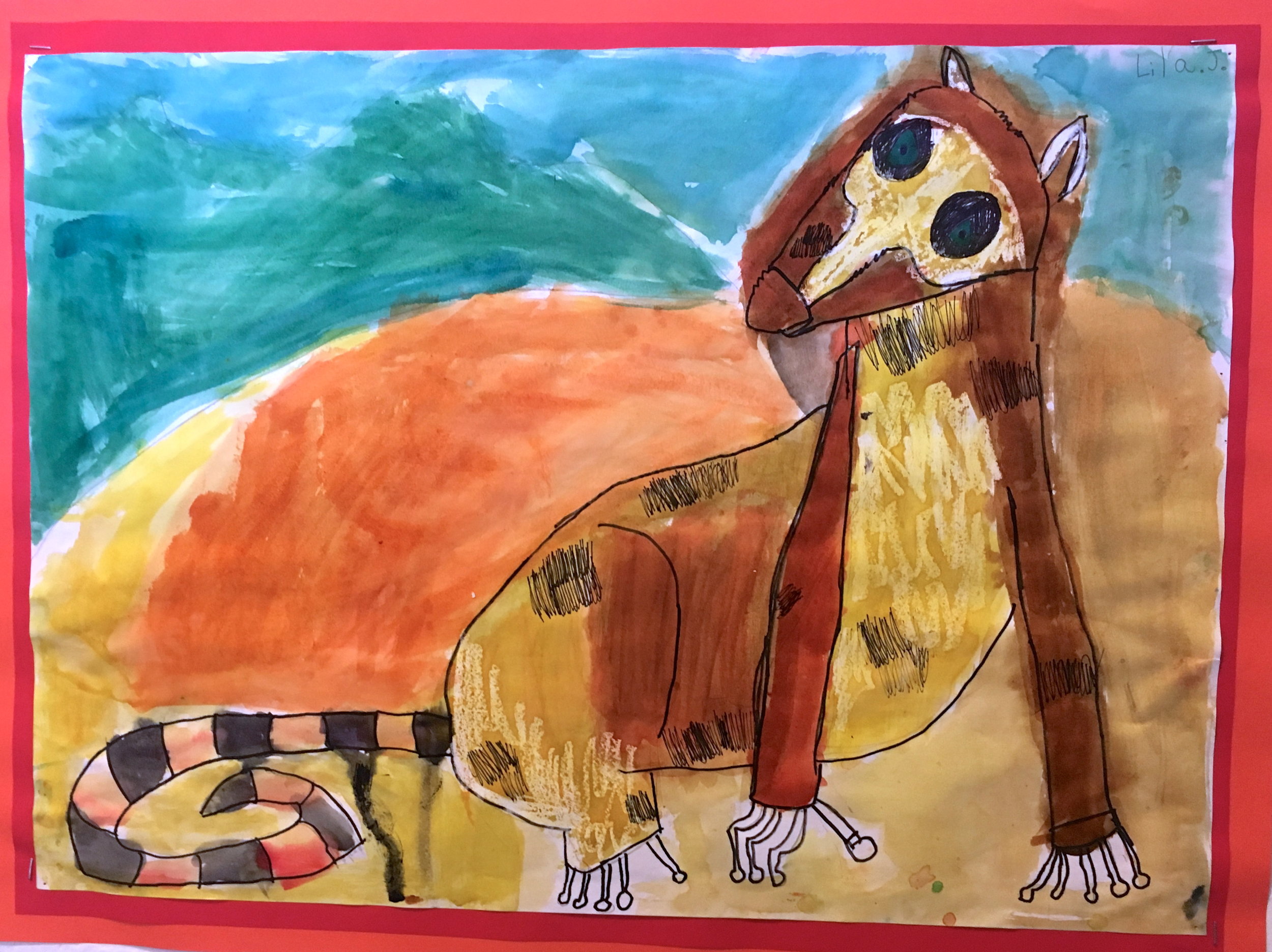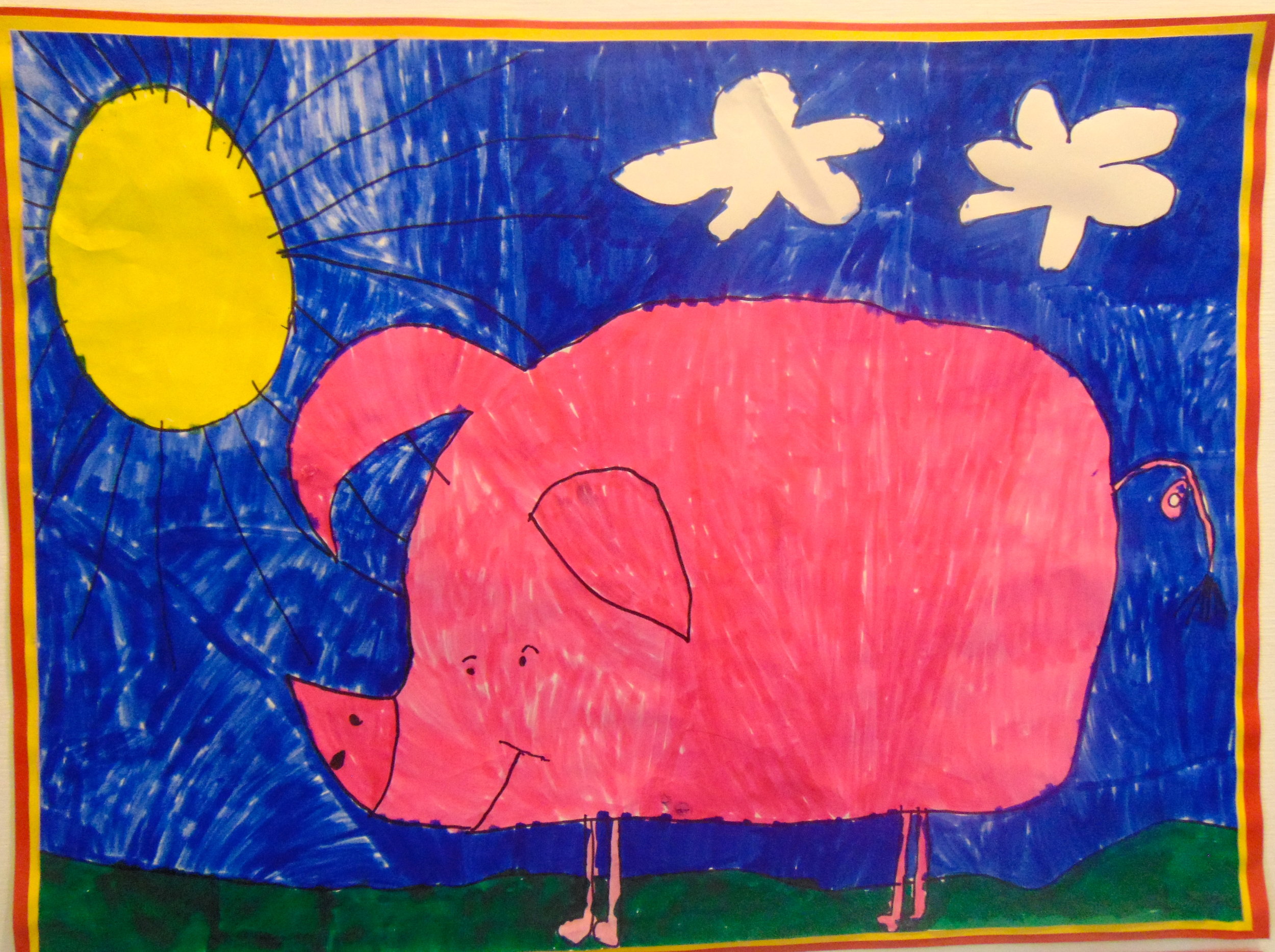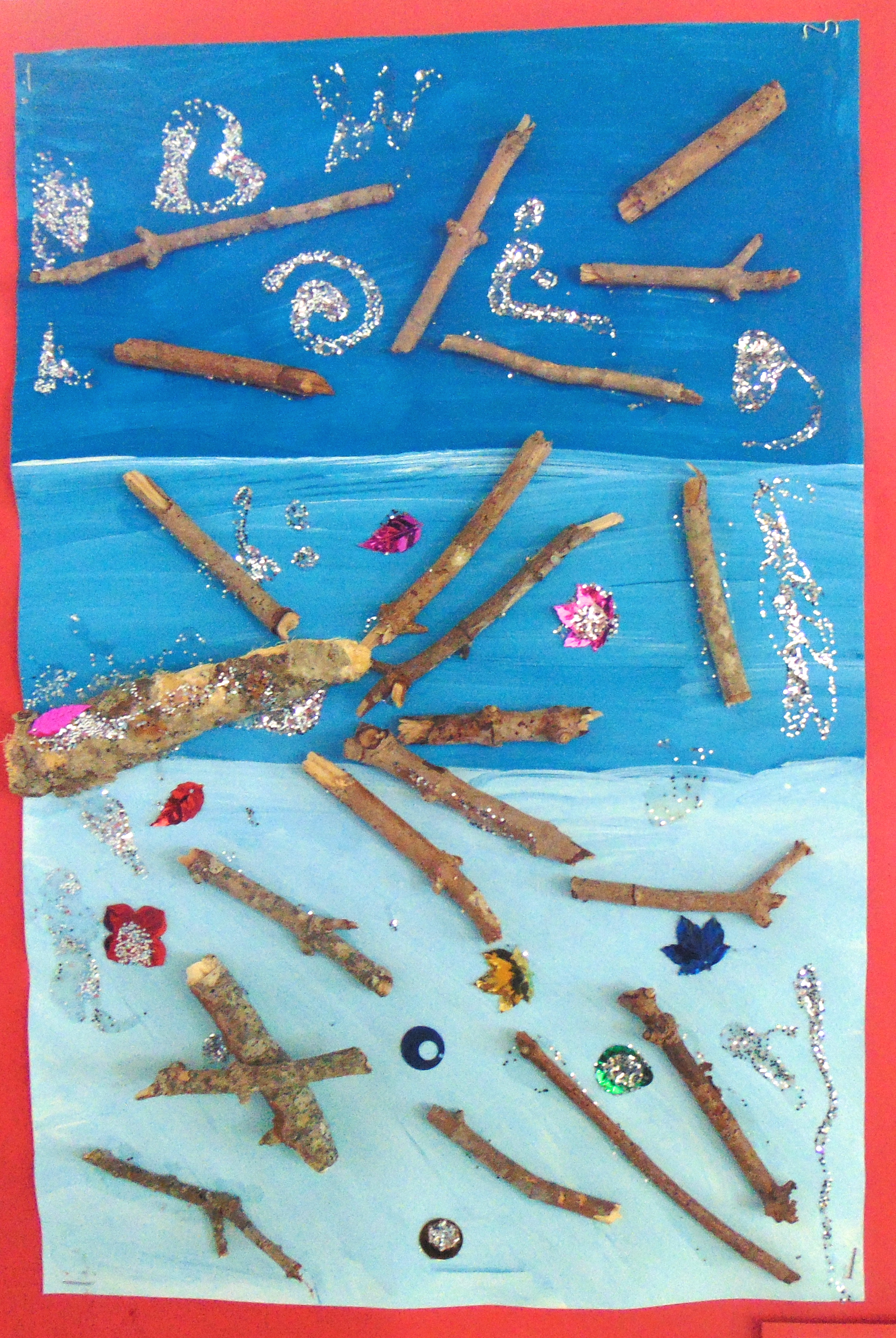Please enjoy this piece written by Sandra Nickerson, our Head of School and Elementary Art teacher. As you will see, Sandy is an inspired educator and mentor who leads our school with equal aplomb. Enjoy.
As our annual young artists’ exhibit hangs on the walls of our school, I’d like to share how we conceptualize it. Just to clarify, the ‘young artists’ are our students, aged 2.9-12. Hanna, our Children’s House and Elementary I Art teacher, and I think of our students as young artists who are on their creative journeys - exploring, discovering, practicing and making. Children from each developmental stage have unique and exciting ways of expressing their perceptions of the world around them.
Our job is not to guide them away from their perceptions but to help them to confidently express who they are in the present. Of course there are some generalizations that can be made. Our youngest artists (3 and 4 year-olds) are very interested in exploring each medium. Subject matter takes second place to process, and actually final product holds very little interest. This is why children might paint a color over and over until there is a hole is their paper. As a child approaches Kindergarten, expressive subject matter can become a focus...a house, a dog, or a pumpkin. They are usually very satisfied with their creations. Frustration and self-doubt play second fiddle to their expressive symbolism. As children move through Elementary I (6 to 9 year-olds), they feel strongly that the viewer understand their intent. Rather than representing people and objects realistically, symbolism becomes the goal. The broccoli-shaped trees seen in their work is an example of this. During EII years (9 to 12 year-olds), young artists begin to shift toward representationalism. They want to draw it how they see it, and they want lessons that help them accomplish this goal. Frustration and self-doubt can begin to surface as artists learn that technique takes lots practice.
As Art educators, Hanna and I create projects that highlight each child’s sensitive period of artistic development. We also create projects where students explore a variety of mediums, styles and techniques. We offer two dimensional and three dimensional work choices. Children begin their work in September, and Hanna I begin to think about May’s Celebration of Art. As the year progresses, we put work aside that highlights each student's’ strengths. We want the work in the show to represent the variety that is done throughout the year. In April we begin to mat the pieces and think about display. Our goal is for each artist to have four pieces in the show. This year we matted, hung and placed more that 300 pieces of art throughout the school.
We do not hang work by age or by project or by classroom. In each space, we display work from different aged artists from all program levels. We want the children from each classroom who live with the work for about a month to appreciate not just their artwork, but the work done by artists of all ages. There is no such notion that the older you are, the better your artwork is. At our school each piece is true art. During the Celebration of Art, we have chosen not to let family and friends know where their young artist’s work is shown. These adult visitors also model for their children that all the art is important and should be respected and enjoyed. Viewers purposefully exploring every art piece with eyes wide open is our goal.
The week after the Celebration of Art, we at Bridgeview Montessori have a special Art History lesson for our Elementary students. We ask them to find an artwork in the exhibit that they really like, sit down, sketch it, and then return to the art studio. When all return, we take turns sharing the sketches and talking about why each of us was drawn to a particular work. It is during this lesson that Hanna and I become quite proud as we listen to how carefully and authentically these young artists talk about another’s work of art. During this lesson students learn that we can be attracted to and appreciate all kinds of art. As teachers, we feel the satisfaction of a job well done and, of course, our ideas start percolating about next year’s curriculum and Celebration of Art.
Please enjoy the gallery below.
